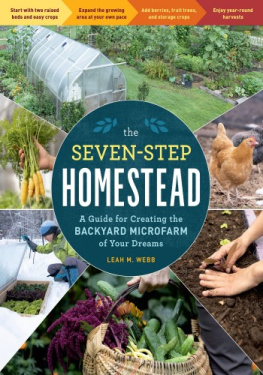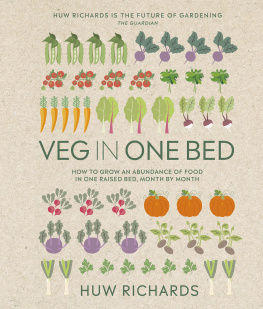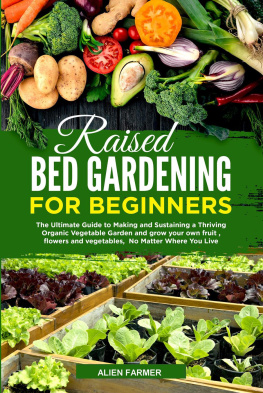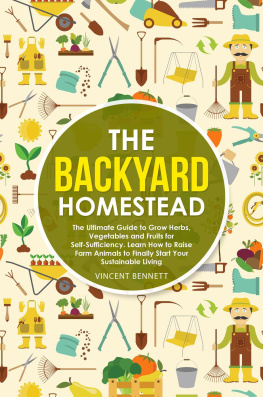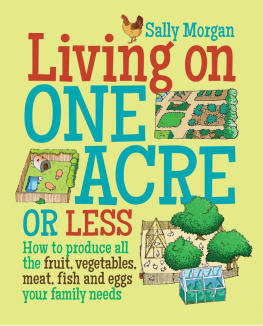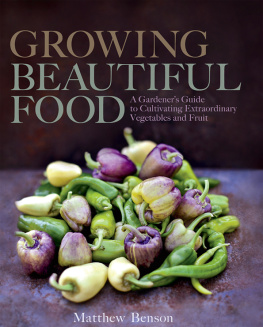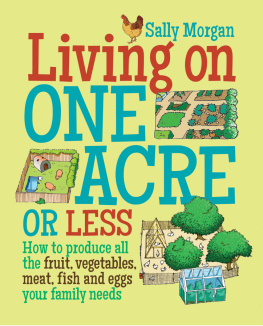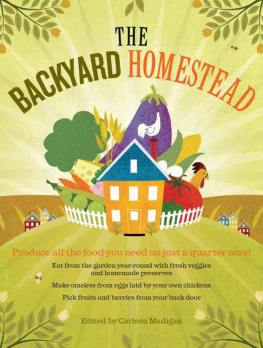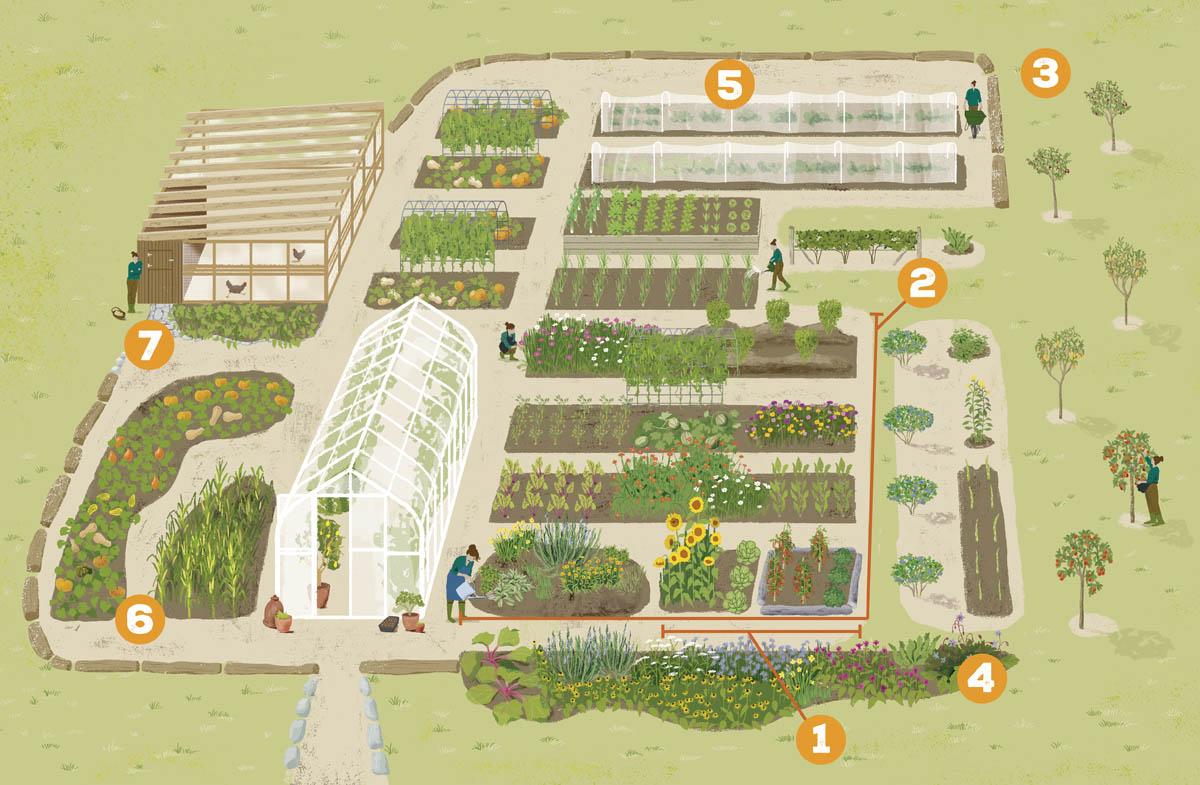Annotation
When faced with financial uncertainty or a potential disruption to the food supply, more people turn to vegetable gardening -- for the joy, satisfaction, and sense of security that comes from growing food. Today's gardeners want a bit of everything -- vegetables, fruit, medicinal herbs, flowers for pollinators, and even chickens for eggs. The dream is to build a diverse landscape that serves multiple functions but achieving that goal can be intimidating and overwhelming. Homesteader Leah Webb shares her strategy for implementing a homestead plan in seven stages, starting small and gradually add more features each year. ***The Seven-Step Homestead*** takes readers through the process with a series of doable steps, beginning with establishing one or two raised beds of the easiest vegetables to grow, and gradually building up to the addition of fruit trees and berry bushes on hugelkulture mounds, a coop full of chickens, and a winter's worth of...
The mission of Storey Publishing is to serve our customers by publishing practical information that encourages personal independence in harmony with the environment.
Edited by Lisa H. Hiley and Carleen Madigan
Art direction by Jessica Armstrong
Book design by Stacy Wakefield Forte
Cover and interior photography by Thomas C. Webb
Additional interior photography by antonivano/stock .adobe.com, 215; Asovereign83/Dreamstime.com, 173; Heather Kasvinksy, https://thisnoshtalgiclife .com, 152; Igor/stock.adobe.com, 114; John Henry Nelson, 91; Lost_in_the_Midwest/stock.adobe.com, 219; Megan Marie Weaver/stock.adobe.com, 213 b.; SE Viera Photo/stock.adobe.com, 220 b.; Tony Campbell/stock.adobe.com, 209
Homestead plans by Scott Jessop
Additional illustrations by Ilona Sherratt Storey Publishing, LLC, except Courtesy of Ark of Taste, 168
Text 2023 by Leah M. Webb
Ebook production by HK Goldstein
Ebook version 1.0
April 4, 2023
All rights reserved. No part of this book may be reproduced without written permission from the publisher, except by a reviewer who may quote brief passages or reproduce illustrations in a review with appropriate credits; nor may any part of this book be reproduced, stored in a retrieval system, or transmitted in any form or by any meanselectronic, mechanical, photocopying, recording, or otherwithout written permission from the publisher.
The information in this book is true and complete to the best of our knowledge. All recommendations are made without guarantee on the part of the author or Storey Publishing. The author and publisher disclaim any liability in connection with the use of this information.
The publisher is not responsible for websites (or their content) that are not owned by the publisher.
Storey books are available at special discounts when purchased in bulk for premiums and sales promotions as well as for fund-raising or educational use. Special editions or book excerpts can also be created to specification. For details, please send an email to
special.markets@hbgusa.com
.
Storey Publishing
210 MASS MoCA Way
North Adams, MA 01247
storey.com
Storey Publishing, LLC is an imprint of Workman Publishing Co., Inc., a subsidiary of Hachette Book Group, Inc., 1290 Avenue of the Americas, New York, NY 10104
ISBNs: 978-1-63586-411-3 (print); 978-1-6586-412-0 (ebook)
Library of Congress Cataloging-in-Publication Data on file
To Mom for growing food and flowers
To Dad for working with tools and trailers
To my husband, TC, for letting me take over the lawn
CONTENTS
Homesteading: It's About More Than Just Food
STEP 1
Starting Off Small: One or Two Beds
STEP 2
Four Hundred Square Feet
STEP 3
Fruit Trees and Shrubs
STEP 4
Edible and Flowering Perennials
STEP 5
Four-Season Growing
STEP 6
Larger-Scale Storage Crops
STEP 7
Farm-Fresh Eggs
Appendix A: Seeding Recommendations
Appendix B: Hardiness and Spacing for Select Flowering and Edible Perennials
Appendix C: When to Sow for Fall and Winter Harvest
Suggested Reading
Acknowlegments
Index
Enjoy Your Best Harvest Ever with These Books from Storey
Share Your Experience!
The Seven-Step Homestead Plan
STEP 1: Starting Off Small: One or Two Beds
STEP 2: Four Hundred Square Feet
STEP 3: Fruit Trees & Shrubs
STEP 4: Edible & Flowering Perennials
STEP 5: Four-Season Growing
STEP 6: Larger-Scale Storage Crops
STEP 7: Farm-Fresh Eggs
HOMESTEADING
its about more than just food
IM FORTUNATE TO HAVE always had gardens in my life. My mother was a gardener, but as a child I never saw the importance of her efforts nor understood the value in what she was doing. Now that I, too, am a mother, Ive realized how lucky I was to grow up consuming the nourishment and knowledge that comes from homegrown foods. I assume it will be the same with my children in that itll likely be decades until they know how privileged we were to have space to garden, money to buy compost, time to build the infrastructure, and the desire to watch it all grow.

My garden aspirations have evolved over the years. Cultivation started with a simple curiosity to grow a small portion of my own food. Heirloom tomatoes, fresh cucumbers, and abundant backyard greens had flavor like nothing I could purchase. They tasted so good, in fact, that I started to resent the lackluster quality of foods available at the grocery store. Motivated by culinary appeal, I began to expand my garden year after year. I had tasted the best, and I wanted more.
But growing food wasnt just about the taste. Superior nutrition was the driving force behind that superior flavor. I recognized that my homegrown foods provided a massive health benefit compared to conventionally grown foods that had often traveled thousands of miles before arriving at the market. And then there were the hours I spent outdoors and the movement involved in vegetable cultivationthe bending, squatting, leaning, carrying, digging, and other agilities required of a gardener. From a holistic health standpoint, organic gardening was a valuable tool to improve personal health.
The fuel and chemical inputs required by large-scale farming also informed my desire to grow my own food. Pesticide usage, operation of heavy farm equipment, plastic packaging, and cross-country transportation mean that the majority of food production poisons the earth that sustains us. By gardening, I could ever so slightly offset the environmental consequences of farming every time I harvested a meal from my backyard. I found hope in the fact that I could help store carbon by collecting dried leaves, twigs, and other organic waste products to build healthy soil. I wasnt just eliminating a portion of my carbon footprint; I was actually tipping the scales in the other direction!

